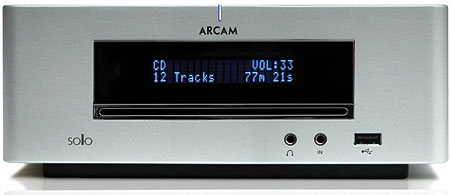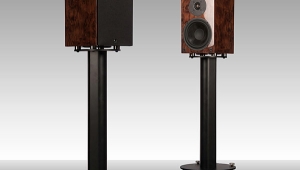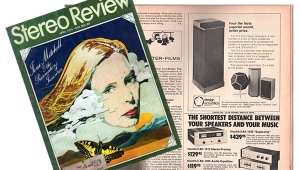| Columns Retired Columns & Blogs |
The Fifth Element #56
There have been lots of great, and even some fabulous books of music criticism or reportage, and I've recommended several in these pages. So far, however, only one has made me chuckle, chortle, or laugh out loud, time and time again.
 Don Breithaupt and Jeff Breithaupt's Precious and Few: Pop Music in the Early '70s ($12.99; New York, St. Martin's Griffin, 1996) covers popular music from the breakup of the Beatles, in 1970, to the ascendance of disco, in 1975. One of the many startling, thought-provoking aperÁus contained in this eminently readable, down-to-earth survey is that, for the five years previous to the period they study, 1966–1970, all of the No.1 hit singles in the US were accounted for by only 13 artists; for the next five years, the figure was more than twice that.
Don Breithaupt and Jeff Breithaupt's Precious and Few: Pop Music in the Early '70s ($12.99; New York, St. Martin's Griffin, 1996) covers popular music from the breakup of the Beatles, in 1970, to the ascendance of disco, in 1975. One of the many startling, thought-provoking aperÁus contained in this eminently readable, down-to-earth survey is that, for the five years previous to the period they study, 1966–1970, all of the No.1 hit singles in the US were accounted for by only 13 artists; for the next five years, the figure was more than twice that.
So what is often regarded as a fallow season in pop-music history, or even an off-limits dump for toxic waste such as "Billy, Don't Be a Hero," "Seasons in the Sun," and "(You're) Having My Baby," was in truth a fertile and very diverse era. The period saw the finest work of Stevie Wonder, Paul Simon, Roberta Flack, James Taylor, Marvin Gaye, Gordon Lightfoot, Janis Ian, and, arguably, Joni Mitchell. Other bands whose time had not quite yet come, such as Steely Dan, got their starts. The Breithaupts study each microgenre with the true enthusiast's loving eye for the telling detail. Such as, on accepting his Grammy, Paul Simon thanked Stevie Wonder for not releasing an album that year. And did you know that "Stairway to Heaven" was never released as a single? Or that Cher was married to Gregg Allman?
The Breithaupts' focus is on singles and radio play, and they maintain a fast pace by dedicating each of their brief chapters to 10 singles, grouped under thematic headings such as "Utopian Pop" ("Imagine," "Why Can't We Be Friends," etc.) and "Self-Pity Pop" ("Rainy Days and Mondays," "All By Myself," etc.). And for those of you too young to remember, the yellow object represented on the book's cover is a snap-in adapter that allows a 45rpm single to be easily centered on an LP spindle.
The Breithaupts don't write like musicologists or sociologists, except to make fun of them; eg, "An exact formula for this can be derived by dividing Country Joe & the Fish by Dr. Hook & the Medicine Show." They are more like the basically benign but always-wisecracking guy you knew in college, whom everyone urged to take a shot at stand-up comedy. Here are two examples from the chapter "Story Songs":
"The stakes are lower when you're reinvestigating Harry Chapin's "Taxi" and Billy Joel's "Piano Man," on-the-job testimonials from a cabbie and a cocktail pianist. "Taxi"'s proto-slacker hero "Harry" (Chapin?), a workingman with many outside interests—getting high and getting stoned—picks up an old girlfriend one night, and all nostalgia breaks loose ("How are ya, Harry?")."
"Michael Murphy's [sic] "Wildfire" (1975), a folky ballad about a dead woman riding a dead horse ("Gee, your mare smells terrific!"), belonged to the popular story-songs-about-animals category, which also included Henry Gross's "Shannon," Lobo's "Me and You and a Dog Named Boo," and America's "A Horse with No Name." Its tragic tone was understandable, of course, but there were human bodies piling up as well. In David Geddes's "Run Joey Run" (1975) Joey's pregnant girlfriend takes one for the team when her gun-toting father flies off the handle (Papa, please preach)...."
Precious and Few has an excellent index, a worthwhile bibliography, and an appendix listing the 1970–75 Grammy finalists and winners in the relevant categories. The book is available new from Amazon for $11.69; I'm sure you can pick up used copies from Alibris.com and eBay for far less. It's not only good for laughs; it will spark both nostalgia and reappraisal ("Yeah, you know, Hamilton, Joe Frank & Reynolds' 'Don't Pull Your Love' really did have some craftsmanship going on").
I expect Precious and Few to send quite a few people to the iTunes Store to hear the free samples of songs that they can't quite remember. Job well done. Highly recommended.
Arcam Solo Mini CD receiver
I've mentioned Arcam's smaller CD receiver a few times, but have yet to give it its own space, so, here it is. The Solo Mini is a half-rack-width, half-price ($999), half-power (25Wpc), visually very similar version of the category-establishing Arcam Solo Music CD receiver ($1999). Art Dudley reviewed the Solo Music in July 2005. I do not disagree with any of his findings on that model, which I had on hand to compare with the Solo Mini.

The Solo Mini plays only CDs, loaded via a slot, and has buttons rather than a knob for volume control. It is very well made, with chic styling that's less retro than slightly tech-y. However, its small size means that it has a very crowded rear panel, with speaker terminals that are quite small, on the cheesy side, and accept none but the smallest spade lugs. The controls on the front edge of the top are also a bit small, so I found myself usually using the remote control. My review sample made various mechanical noises while loading a disc or accessing a track, but not at all during play.
One rival to the Solo Mini is Integra's DSR-4.8 DVD/SACD/CD receiver ($600), which I wrote about in April. People are more likely to compare the Mini against something close to its price rather than just over half its price. As I went directly from the Integra to the Mini while listening to Donald Fagen's The Nightfly (CD, Warner Bros. 23696-2) through PSB's Imagine B loudspeakers, the Mini sounded immediately warmer, rounder, and fuller, with stronger bass. The last was something of a surprise, given the Mini's 25Wpc. I also found the inner instrumental and human voices in the first track, "I.G.Y.," better defined through the Arcam. To put it in as few words as possible, the Mini just sounded darn good.
- Log in or register to post comments




































